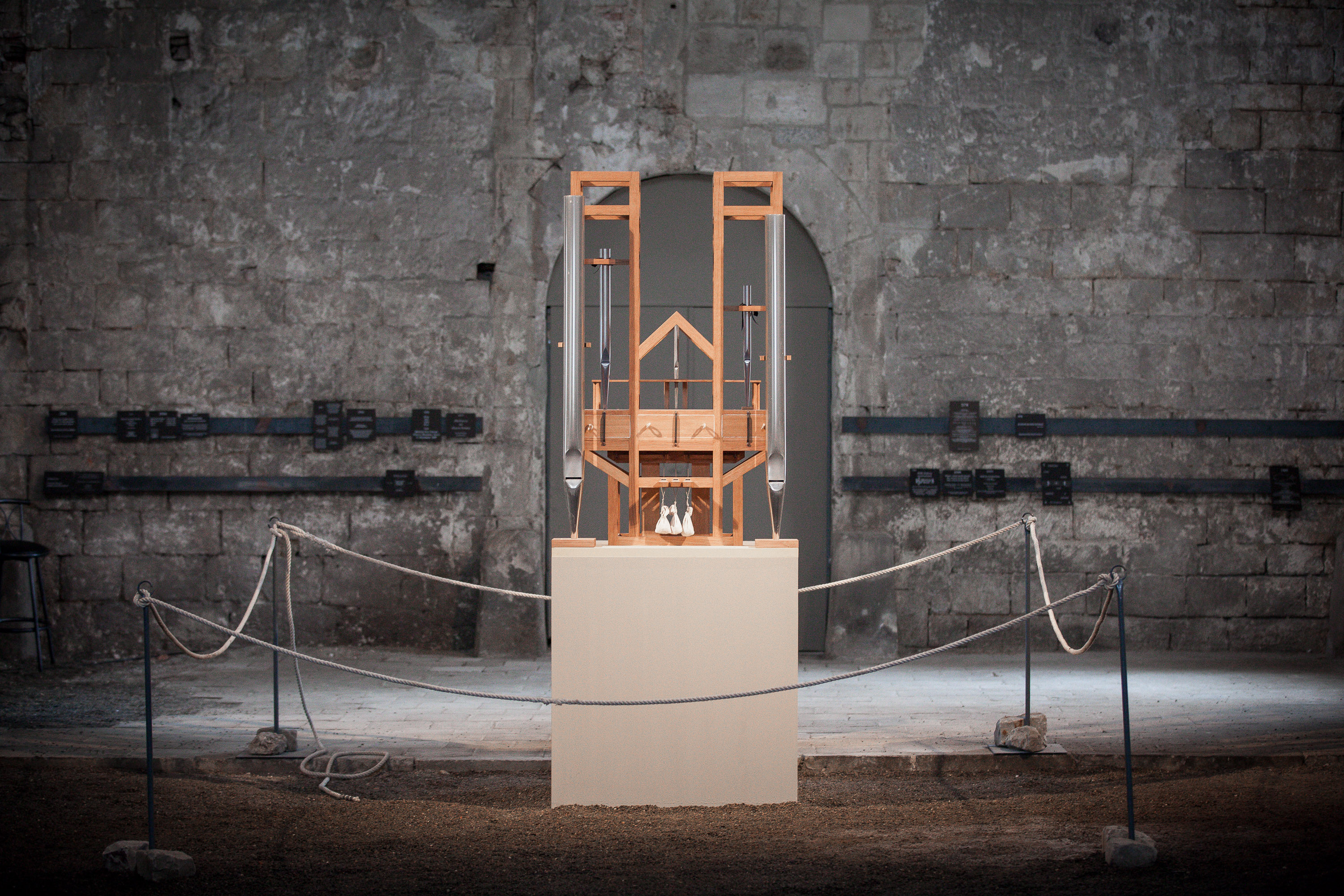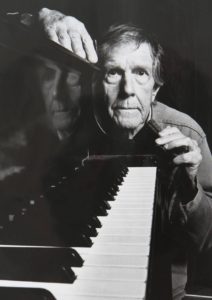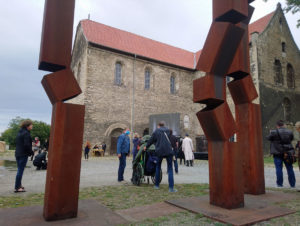Eternity turns a corner: John Cage in Halberstadt

1361 CE
In Western musical tradition, the piano-type keyboard with black and white keys has achieved a status of iconic recognizability – from ancient harpsichords to modern pianos and synthesizers. The keyboard is a rather old invention, seemingly appearing for the first time in the Gothic cathedral in the German city of Halberstadt in 1361.
At least we know of an organ with a keyboard resembling today built for this church. Based on Western music theory’s division of the octave into 12 semitones, it was the earliest known example of design that has since formed the basis for virtually all keyboard instruments in the Western music tradition up to the present day.

1987 CE
In 1987, the American composer John Cage wrote a piece for the organist Gerd Zacher. A revision of a previous work – “ASLSP” for piano (1985) – it was entitled “Organ2 ASLSP (As Slow as Possible)”. The piece was subsequently performed with different durations – from 20 minutes up to 71 hours.
1997 CE
At an organ symposium in the German city of Trossingen, one of the topics discussed was “Organ2 ASLSP (As Slow as Possible)”. A group of organists, musicologists, organ builders, theologians, and philosophers participated in a debate about how “as slow as possible” could possibly be interpreted.
The idea of a millennium-long performance was quickly abandoned. For Germans, it was bound to echo traumatic memories of Hitler’s visions of a “Thousand-Year Reich”. Instead, they chose to use Halberstadt’s old clock organ as a starting point: What if the performance stretched as far into the future as the first modern organ lay in the past? If the performance was to begin in the year 2000 – 639 years after the inauguration of the old organ – the piece would play 639 years into the future.
The original Halberstadt organ no longer exists. Instead, it was now necessary to build an organ that could last for centuries. And as the Gothic cathedral in Halberstadt is still both a functioning church and a popular tourist attraction, there was no way it could be reserved for a century-long organ concert. Therefore, the choice of a suitable performance space was also an issue.
The new Halberstadt organ ironically has no keyboard. Instead, it is a primitive music machine, consisting essentially of a bellows and a number of holes – and a small arsenal of loose organ pipes. A tone is played by placing an organ pipe in a hole – and ends when the pipe is eventually removed. And due to the extremely slow tempo, months and years pass between tone changes.
Halberstadt’s small Burchardi church was chosen to host the performance. Built in 1050, it was already standing when the old Halberstadt organ was built. It has since led a tumultuous existence as a monastery, a distillery – and a pigsty – until now becoming the setting for a unique music project.
2001 CE
All preparations were finally in place in 2001, when the performance on the new organ in Burchardi church began on John Cage’s 91st birthday (he died in 1992). Cage’s graphic score starts with a slight pause before the first chord is struck. Still aiming for a playing time of 639 years (the one-year delay notwhitstanding), this pause was calculated to last for 17 months. For almost a year and a half, only the quiet breath of the new organ’s bellows was heard – until the first organ pipes were inserted and the first chord struck. Since then, interested parties have been able to visit Burchardikirken and listen to the organ’s sustained and often dissonant sound.

2020 CE
On a gray day in September 2020, I arrived by train in Halberstadt in time for the 15th “Klangwechsel” (tone change). In the small courtyard outside the Burchardi church, I encounter a small gathering of surprisingly ordinary-looking spectators. Only a number of journalists stand out from the crowd with their large cameras and microphones who have. They’re here to report on the fact that today – on John Cage’s 108th birthday – the work’s 15th note is to be set.
The church only has room for a small audience – and due to the ongoing Coronavirus pandemic, the number of participants has been further limited. A few, remarkably expensive tickets are on sale – their main function to sponsor the ongoing project. Those of us without tickets stand in the courtyard where we’re able to follow the event on a large screen. A small booth sells coffee, beer, and sausages – another sells souvenirs in the form of scores, t-shirts, and of course, face masks.

Half an hour before the changing of the note, the chairman of the John Cage Foundation, Dr. Rainer Neugebauer, appears on the big screen. He gives an introduction to the project and explains the event of the day. His dedication and reverence for the project is unmistakable – but so is the dry humor that inevitably sneaks in when working on something with more than a touch of sheer insanity.
The actual change – solemnly conducted by Dr. Neugebauer from the original score – takes only a few seconds. Two young, hopeful music talents insert the two selected organ pipes. And that’s it. From now on they will sound until the next Klangwechsel in February 2022, when one of them will be removed again. Two years later, a new pipe will be added – and so on. At this almost unfathomably slow pace, the performance of the piece will go on year after year until the last tone, according to plan, finally ends one day in the year 2640.
Whether this will actually happen, none of us can know – and none of us who are here today will be alive by then. We can only guess what the world will be like at that time – but we can safely assume that it will be as different from the present as the present is from the year 1361. No human will live long enough to hear the entire work – at best, in our short lives, we can glimpse a small corner of eternity.
2640 CE
It’s notoriously difficult to predict the future. We don’t even know if our current calendar will still be in use in centuries to come.
But if we like, we can imagine that one day in the year 2640, some of our distant descendants will remove the last organ pipes from the then ancient music machine in Halberstadt.
And for the first time in 639 years, there will be complete silence in the Burchardi church.
Leave a Reply